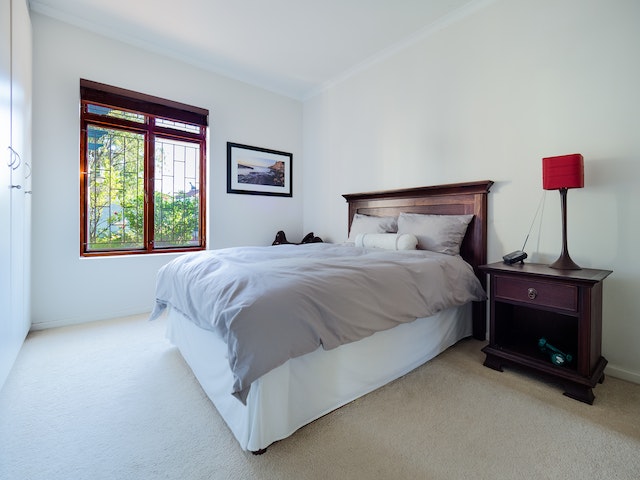
The decision to sell your unfurnished or furnished rental property is pivotal for real estate investors, and it hinges on a careful evaluation of various factors.
A furnished apartment or house can offer convenience and potentially command higher prices, but market conditions play a crucial role. In a seller's market with high demand, a furnished short term rental may shine, while a buyer's market might favor unfurnished options.
Your investment strategy and target audience also matter; a quick sale may favor furnishings, while long-term investment goals could lean toward an unfurnished approach. It is cost efficient to rent fully furnished rental units when purchasing a rental unit.
As a tenant, it’s important to explore the key aspects to weigh when deciding whether to sell your furnished rentals or not.
What Does a Furnished House Mean for Investors?
Furnished rentals are equipped with essential furniture, appliances, and often some basic amenities. When owners offer a furnished rental, they are providing their buyer with more than just an empty place. In fact, you are advertising a property with a ready-to-move-in living environment. This factor is one of the main reasons why most people prefer furnished apartments, houses and vacation rentals intsead of unfurnished rentals.
Here's what furnished rentals typically include:
● Furniture: This includes basic furniture like sofas, beds, dining tables and chairs, dressers, and sometimes even outdoor furniture. The specific furnishings can vary, but they should cover the basic needs for anyone moving in.
● Appliances: You can provide essentials, such as a refrigerator, stove or oven, microwave, dishwasher, and washer/dryer. The inclusion of these essential items is a significant convenience for buyers.
● Basic Kitchenware: When renting out a furnished property it is best to also include basic kitchenware like pots, pans, dishes, and utensils. This can make moving in easier for buyers who may not have their own kitchen supplies.
● Decor and Decorative Items: While not usually included, some owners may provide decorative items such as a coffee table, artwork, lamps, and rugs to enhance the overall aesthetic of the rental.

Advantages of Selling Your House Furnished
In order for you to succed in the rental market a furnished place can be attractive to certain types of prospective tenants. It can also command higher security deposit and higher rent compared to an unfurnished rental due to the added convenience, style, and amenities provided.
Here are the common reasons why you should consider selling your rental unit furnished:
● Attracts Relocating or Investment Buyers:: Furnished homes may appeal to buyers who are relocating and need a temporary living arrangement or those who are looking for a good area to invest in.
● Higher Asking Price: Fully furnished properties generally command a higher price compared to unfurnished ones. This is because you are not only providing the living space but also the convenience of a ready-to-use home. The additional security deposit and income can help offset the costs of furnishing and maintenance.
● Staging Benefits: Furnished homes tend to show better, as furniture can help potential buyers visualize how the space can be used and make it feel more inviting.
● Easier for Out of Town Buyers Furnished properties cater to a broader audience when posting a property listing, especially for out of town buyers. This can reduce the time your property sits on the market and allows for the prospective tenants to not worry about buying their own furniture.
.jpeg)
Factors to Consider Before You Choose to Furnish Your Property
There are factors you need to consider as a landlord when you decide to sell your furnished rental properties. You should be aware that maintaining a furnished place comes with some challenges.
Here are the factors that you need to consider before making a decision:
● Initial Investment: Adding furniture, appliances, decor, and other home accessories can be a substantial upfront cost. It's crucial to calculate these expenses and compare them to the potential increase in your selling price to determine whether the investment is worthwhile.
● Limited Buyer Pool: Another consideration is the limited buyer pool for furnished homes. While some buyers may be attracted to the convenience of a ready-to-move-in property, others may prefer an unfurnished space where they can personalize it according to their tastes and needs. This could potentially reduce the number of interested parties.
● Depersonalization: Furnished properties may present a challenge for buyers who struggle to envision their own belongings in the space when it's already furnished. This can hinder their emotional connection to the property, making them less likely to commit to the purchase.
Bottom Line
Ultimately, the decision to sell a furnished property or unfurnished should be based on rental market conditions, the preferences of the target buyers, and your own financial and logistical considerations.
If you choose to go the furnished route, remember to keep the property well-maintained to ensure it remains attractive to potential buyers. If you opt for an unfurnished property, focus on offering a clean, well-maintained space that allows buyers to personalize it to their liking.
You could also consider a middle-ground option, such as offering to sell furniture separately as an option, might appeal to a broader range of buyers.
Both furnished and unfurnished properties have their merits, and the decision should align with your investment strategy. With careful planning, you can make an informed choice that maximizes your income.
If you are not sure what is best for you, it’s recommended to work with professional real estate experts who are knowledgeable of the local market in your area. For questions, contact Rockbridge Real Estate the best property management business in your area and we’ll be happy to serve you.